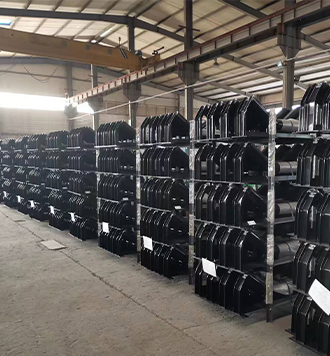 Afrikaans
Afrikaans  Albanian
Albanian  Amharic
Amharic  Arabic
Arabic  Armenian
Armenian  Azerbaijani
Azerbaijani  Basque
Basque  Belarusian
Belarusian  Bengali
Bengali  Bosnian
Bosnian  Bulgarian
Bulgarian  Catalan
Catalan  Cebuano
Cebuano  Corsican
Corsican  Croatian
Croatian  Czech
Czech  Danish
Danish  Dutch
Dutch  English
English  Esperanto
Esperanto  Estonian
Estonian  Finnish
Finnish  French
French  Frisian
Frisian  Galician
Galician  Georgian
Georgian  German
German  Greek
Greek  Gujarati
Gujarati  Haitian Creole
Haitian Creole  hausa
hausa  hawaiian
hawaiian  Hebrew
Hebrew  Hindi
Hindi  Miao
Miao  Hungarian
Hungarian  Icelandic
Icelandic  igbo
igbo  Indonesian
Indonesian  irish
irish  Italian
Italian  Japanese
Japanese  Javanese
Javanese  Kannada
Kannada  kazakh
kazakh  Khmer
Khmer  Rwandese
Rwandese  Korean
Korean  Kurdish
Kurdish  Kyrgyz
Kyrgyz  Lao
Lao  Latin
Latin  Latvian
Latvian  Lithuanian
Lithuanian  Luxembourgish
Luxembourgish  Macedonian
Macedonian  Malgashi
Malgashi  Malay
Malay  Malayalam
Malayalam  Maltese
Maltese  Maori
Maori  Marathi
Marathi  Mongolian
Mongolian  Myanmar
Myanmar  Nepali
Nepali  Norwegian
Norwegian  Norwegian
Norwegian  Occitan
Occitan  Pashto
Pashto  Persian
Persian  Polish
Polish  Portuguese
Portuguese  Punjabi
Punjabi  Romanian
Romanian  Russian
Russian  Samoan
Samoan  Scottish Gaelic
Scottish Gaelic  Serbian
Serbian  Sesotho
Sesotho  Shona
Shona  Sindhi
Sindhi  Sinhala
Sinhala  Slovak
Slovak  Slovenian
Slovenian  Somali
Somali  Spanish
Spanish  Sundanese
Sundanese  Swahili
Swahili  Swedish
Swedish  Tagalog
Tagalog  Tajik
Tajik  Tamil
Tamil  Tatar
Tatar  Telugu
Telugu  Thai
Thai  Turkish
Turkish  Turkmen
Turkmen  Ukrainian
Ukrainian  Urdu
Urdu  Uighur
Uighur  Uzbek
Uzbek  Vietnamese
Vietnamese  Welsh
Welsh  Bantu
Bantu  Yiddish
Yiddish  Yoruba
Yoruba  Zulu
Zulu Techniques for Optimizing Conveyor Belt Scraper Alignment and Performance Adjustment Methods
Conveyor Belt Scraper Adjustment Ensuring Optimal Performance
Conveyor belts are integral to modern manufacturing and logistics operations, facilitating the efficient movement of products across various stages of production and distribution. However, one of the critical components that significantly impacts the performance of conveyor systems is the conveyor belt scraper. Properly adjusted scrapers ensure the cleanliness of the conveyor belt, reduce wear and tear, and enhance operational efficiency. In this article, we will discuss the importance of conveyor belt scrapers, the factors influencing their adjustment, and best practices for maintaining them.
The Importance of Conveyor Belt Scrapers
Conveyor belt scrapers are devices installed on conveyor systems to clean the surface of the belt as it moves, removing residual materials that could otherwise affect the performance of the belt and the equipment. Their primary function is to minimize carryback—the material that sticks to the belt and is not discharged at the intended transfer point. Carryback can lead to numerous issues, including increased maintenance costs, safety hazards due to slippery floors, and reduced productivity due to belt slippage.
An effective scraper can help maintain a cleaner working environment, prolong the life of the conveyor belt, and prevent material spillage. Thus, proper adjustment of the scrapers is crucial to their performance and the overall efficiency of the conveyor system.
Factors Influencing Scraper Adjustment
Adjusting conveyor belt scrapers involves considering various factors that can affect their effectiveness
1. Belt Tension and Alignment The tension and alignment of the conveyor belt play a significant role in how well the scraper can function. If the belt is misaligned or not adequately tensioned, it can lead to uneven wear and inadequate cleaning.
2. Material Characteristics Different materials exhibit varying levels of adherence to the belt. For instance, sticky materials may require more aggressive scrapers or specific materials contingent upon the application.
3. Scraper Design Various scraper designs exist, including primary, secondary, and even tertiary scrapers. Each type serves a specific purpose, and selecting the right design is critical for achieving optimal performance.
conveyor belt scraper adjustment

4. Operating Conditions Factors such as temperature, humidity, and the presence of dust or moisture can influence the effectiveness of the scraper. These conditions can affect the adhesion of the material to the belt, necessitating periodic adjustments.
Best Practices for Scraper Adjustment
To ensure that conveyor belt scrapers function optimally, maintenance teams should follow these best practices
1. Regular Inspections Routinely inspect the scrapers for wear and damage. Check for any buildup of material that could hinder the scraper’s ability to clean the belt effectively.
2. Proper Settings Adjust the scraper to the correct pressure and angle against the belt. The ideal position typically allows for maximum cleaning efficiency without excessively wearing the belt or scraper.
3. Maintenance Schedule Implement a regular maintenance schedule that includes checking and adjusting scrapers as part of routine operations.
4. Training Ensure that all relevant personnel are trained on the proper adjustment and maintenance of conveyor belt scrapers. This training should address the implications of improper scraping on safety and productivity.
5. Feedback Mechanism Establish a feedback mechanism where operators can report issues related to scraper performance. This will foster a culture of continuous improvement and prompt maintenance interventions.
In conclusion, the adjustment of conveyor belt scrapers is a critical component of effective conveyor system operation. By understanding the importance of these devices and adhering to best practices for their maintenance and adjustment, industries can significantly enhance their productivity, reduce costs, and improve safety across the board.
-
Revolutionizing Conveyor Reliability with Advanced Rubber Lagging PulleysNewsJul.22,2025
-
Powering Precision and Durability with Expert Manufacturers of Conveyor ComponentsNewsJul.22,2025
-
Optimizing Conveyor Systems with Advanced Conveyor AccessoriesNewsJul.22,2025
-
Maximize Conveyor Efficiency with Quality Conveyor Idler PulleysNewsJul.22,2025
-
Future-Proof Your Conveyor System with High-Performance Polyurethane RollerNewsJul.22,2025
-
Driving Efficiency Forward with Quality Idlers and RollersNewsJul.22,2025





























